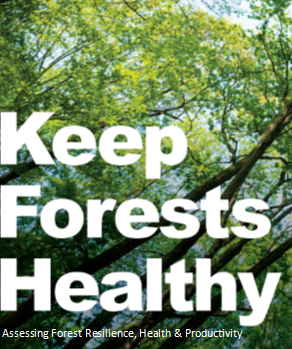SLELO PRISM-Robert Smith
Urban Forests & Climate Change
Climatologists are predicting an increase in annual mean temperature ranging from 3-8°F by 2100, along with increased drought periods, flooding, and severity of storm events (1) . These changes to the climate are being attributed to an increase in the production of greenhouse gases (2). The main culprit of these gases being carbon dioxide (CO2), comprising 76% of the emissions (3). One way that we can mitigate this increase in CO2 levels is by planting trees. Through the process of photosynthesis, trees store CO2 in their tissues (branches, trunk, roots, leaves) and this equates to less CO2 in the atmosphere. In fact, one tree over its lifetime can absorb several tons of carbon dioxide (4). This capacity for trees to absorb and store carbon adds up and is estimated to be 708 million tons in the urban forests of the U.S (5).
In addition, trees can reduce CO2 production through decreased heating and cooling costs. CO2 is produced in heating and cooling homes and buildings through direct use of fossil fuels or indirectly through electricity which two-thirds is produced using fossil fuels (4). These reductions in heating and cooling costs are achieved by trees in the summer through shading and in the winter through additional sunlight received through leafless deciduous trees and conifers blocking frigid winds from the north (6) . According to the U.S. Department of Energy, carefully placed trees can save up to 25% of the energy a typical household uses (6). By planting trees, we can play a role in combating climate change through carbon reduction and storage. While planting trees will not solve our current climate change problem, it can be part of the solution when combined with decreased CO2 emission technologies/alternative energy.
As part of the effort to combat climate change, SLELO PRISM is promoting our Urban Forest Sustainability Initiative (UFSI). This program promotes strategies and techniques that keep forests resilient to invasive pests, pathogens, and climate change. The goal of this program is to sustain healthy urban forests. We are interested in collaborating with urban forest/street tree managers in cities within the SLELO region. We have prepared a UFSI guide, UFSI presentation, and have some funding available for trees. Please reach out to robert.l.smith@tnc.org, 315 387 3600 x7723.
Tug Hill Restoration Project
During the past three years, the SLELO PRISM has collaborated with The Nature Conservancy to restore historical logging trails and patch-cut logging operations back to native forest.
Past logging operations resulted in the introduction of invasive species namely common buckthorn and honeysuckle. After these invasive species were suppressed, 35,000 native climate adaptable trees were planted in 2018 to include 26 species (long-lived legacy (sugar maples, red spruce), northern edge species (Oak, Pine, Hickory). In 2019, beech bark diseased trees were removed or girdled to increase coarse woody debris. In 2020 an additional 9,000 trees were planted this spring over 20 acres. This year’s plantings included Red Oak, White Oak, White Pine, Sugar Maple.
The goal of this effort is to restore disturbed areas within the Tug Hill core forest to a native, climate adaptable, and forest pest resilient ecosystem. You can learn more about this project online.


